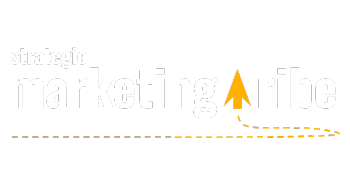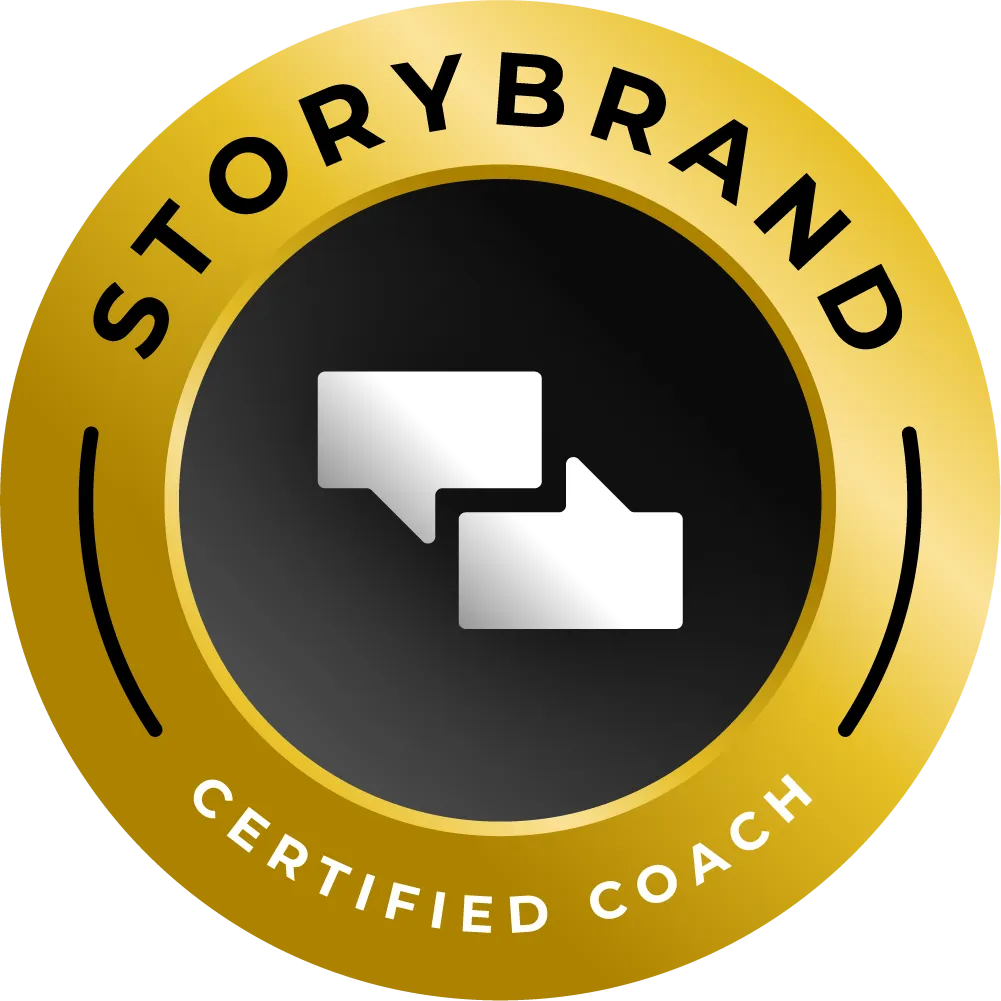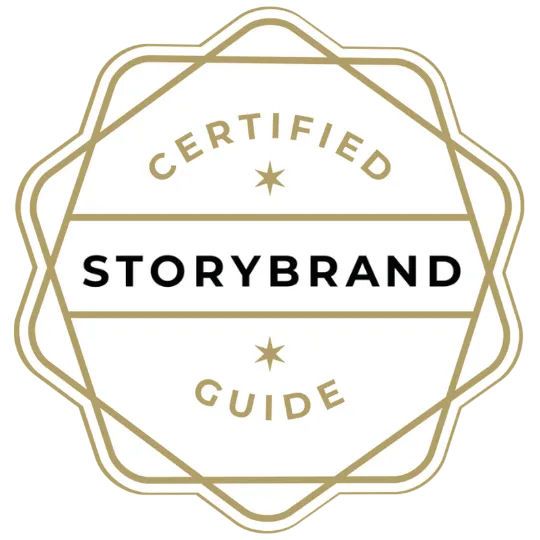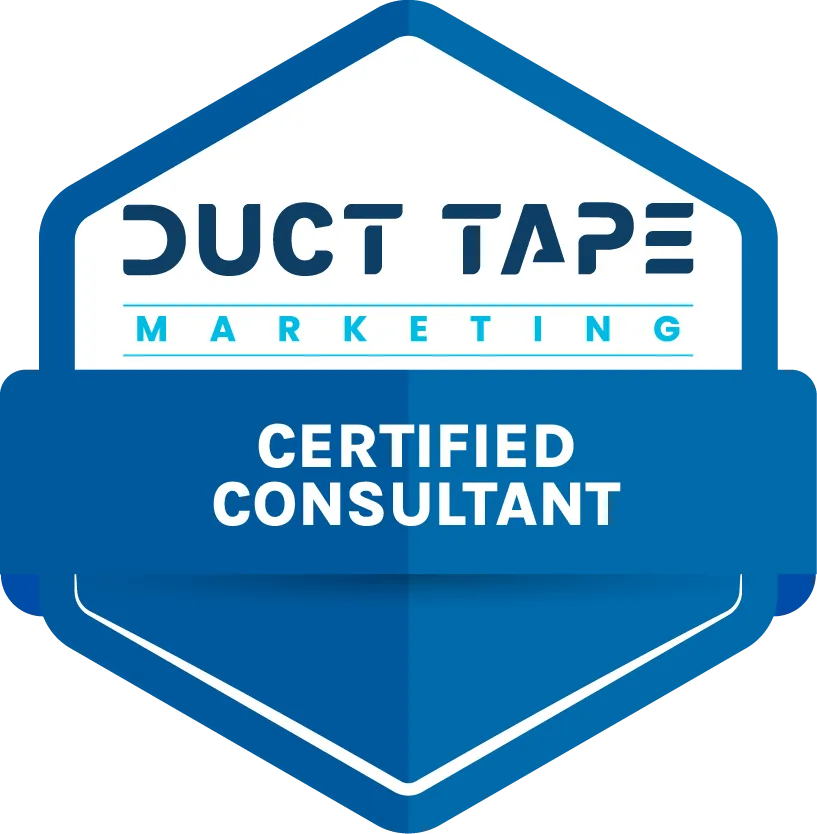STORY, MEET STRATEGY
Let’s make marketing feel less robotic and more real.
Find resources that bring your message—and your business—to life.

The Coffee Truck That Outsmarted Starbucks: A Story About Marketing That Works
Marketing is like owning a coffee truck in a city full of Starbucks. Sure, your coffee might be incredible—better beans, richer flavours, brewed with care—but how do you convince people to pick your truck over the polished chain down the street? It doesn’t matter how great your coffee is if no one knows why they should choose it. That’s the challenge: it’s not just about the product; it’s about the story you tell.
I’m Vicky Sidler, a StoryBrand Certified Guide, and I’ve spent years helping businesses simplify their message into a story that connects. Done right, the StoryBrand Framework helps you figure out what your customers really need, how to meet that need, and how to make them feel like they’ve finally found the solution they’ve been searching for.
The good news? You don’t need a million-dollar ad budget to compete. You just need a message that makes people stop, pay attention, and think, “This is exactly what I’ve been looking for.”
But let’s start with a story.
The Coffee Truck Connection
It’s about a guy with a coffee truck. He parked on busy streets, brewed good coffee, and watched as a steady line of customers showed up every morning. But as time went on, the line seemed shorter. People were walking past his truck to competitors with flashy signs or other gimmicks. He was losing regulars to fancier coffee shops and bigger chains.
One day, he overheard a conversation between two former customers:
“I love their coffee, but I don’t have time to wait in line.”
That hit him like a double shot of espresso. It wasn’t the coffee—it was the waiting. He realised his customers weren’t just busy; they were in a hurry. They didn’t want to choose between good coffee and getting to work on time.
So, he made a bold move to make it easier for them. He added a QR code to his loyalty cards, allowing customers to order and pay in advance. It was perfect—hot coffee waiting for them when they arrived, no line, no stress.
But nothing changed. Why? Because instead of communicating how he made mornings easier, his truck was covered with slogans like, “Handcrafted Perfection” and “Artisan Roasts Since 2020.” He was talking about himself, not the solution his customers actually needed.
Mistakes That Cost Millions
This isn’t a new problem. Have you ever heard of New Coke? In 1985, Coca-Cola thought it was a brilliant idea to replace its original formula with a sweeter version. Taste tests said people preferred it, so the change seemed like a no-brainer.
But here’s what Coca-Cola missed: customers weren’t just buying a soda—they were buying memories, nostalgia, and a sense of tradition. New Coke felt like a betrayal.
At first, sales rose 8% so it seemed like a success, but as soon as customers got a taste, the backlash was swift and vicious. By June, Coca-Cola was fielding over 1,500 angry calls a day. People felt like a piece of their identity had been taken away. Less than three months later, Coca-Cola reintroduced the original formula as "Coca-Cola Classic."
Why did this happen? Coca-Cola focused on an external problem (taste) but ignored the internal and philosophical ones. Customers didn’t just want a better-tasting soda; they wanted to feel connected to something familiar and timeless. This is just one example to prove that sometimes it’s not about what you offer, but how you connect with your audience.
Why StoryBrand Works
Stories like Coca Cola’s and the coffee truck’s are exactly why the StoryBrand Framework is so powerful. Customers don’t just buy products and services—they buy solutions to problems, both big and small.
The framework breaks down every story into seven elements that reflect how people make decisions:
A Hero
Your customer is the star, not you. They’re on a journey to solve a problem, and your role is to make that journey easier. Ask yourself: What do they want, and how can you help them get it? The coffee truck’s customers were busy commuters who needed caffeine and convenience.A Problem
No story works without conflict. Identify the external problem they’re trying to solve (e.g., long lines for coffee), the internal frustration that problem creates (e.g., feeling rushed), and the philosophical issue at play (e.g., “Getting good coffee shouldn’t cause you to run late”).A Guide
This is your role. Show empathy by acknowledging their struggle and demonstrate authority by offering a solution they can trust. Like the coffee truck owner, you’re the steady hand guiding them through their frustration. “I know mornings are chaotic—that’s why I’m here.”A Plan
Customers need clarity. Lay out the steps they need to take—no more than three—and make it feel doable. For example: “Scan the QR Code. Place your order in seconds. Grab your coffee when you arrive.”A Call to Action
Be direct about what they need to do next. “Book a consultation.” “Order now.” Don’t leave them guessing.Avoiding Failure
Highlight the consequences of inaction. What happens if they don’t solve their problem? Will they waste time, lose money, or miss an opportunity? Make it clear why action matters.Success
Paint a vivid picture of the better future you’re offering. Show them what life looks like once their problem is solved—whether it’s sipping coffee stress-free or finally having a marketing plan that works.
When you tell a story that hits all these points, people don’t just hear your message—they feel it. And when they feel it, they act on it.
What’s Your Coffee Truck Moment?
Every business has its own “coffee truck moment.” It’s not about reinventing what you sell—it’s about discovering where your customers are getting stuck and why they’re walking past your “truck.”
For the coffee truck owner, it wasn’t the quality of his coffee that was the problem. It was the experience: busy commuters couldn’t spare the time to wait in line. They needed speed and convenience. But instead of communicating how he made their mornings easier, he focused on himself—his craftsmanship, his history. His messaging didn’t answer the one question that mattered to them: How does this help me?
So, what’s the equivalent in your business?
Are customers overwhelmed by too many options?
Do they hesitate because they’re not sure what makes you different?
Or is it something they don’t even realise they’re frustrated with—like how long it takes to get a response or how complicated your website feels?
Find the disconnect. Once you understand what’s slowing your customers down, you can adjust your messaging to focus on solving their problem—not just talking about your solution.
How to Apply This to Your Marketing
If you’ve ever felt like your marketing is falling flat despite offering a great product or service, the problem might not be what you’re selling—it’s how you’re talking about it. Here’s how to refocus your message:
Start With Your Customers
Talk to your audience. What’s frustrating them about the problem you solve? What do they really care about, beyond the basics? And why did they choose you, specifically? How do you address the problem in a way that no one else does?Simplify Your Message
Use the StoryBrand Framework to address three levels of problems:External: What’s the surface-level issue?
Internal: How does that issue make them feel?
Philosophical: What’s the larger belief or expectation they have?
Speak Their Language
Avoid jargon and self-congratulatory slogans. Instead, focus on clarity and relatability. Show them how you make their lives better.
For the coffee truck owner, he changed his approach, swapping slogans about “artisan roasts” for a message that spoke to their needs: “Hot coffee, ready when you are. Order ahead and skip the line.” The results were immediate. The same loyal customers came back, and new ones followed, drawn by the promise of convenience without compromise. He didn’t just sell coffee—he solved a problem. And in doing so, he turned his truck into the one-stop solution busy commuters couldn’t ignore.
Similarly, by focusing your marketing on your customers’ needs, frustrations, and aspirations, you can turn casual interest into loyalty—and loyalty into growth.
Looking For More?
In our next blog, we’ll dive into the three most common mistakes businesses make when creating their StoryBrand messaging—and how to fix them before they cost you customers.
Don’t Want to Wait?
If you’re too impatient to wait for the next blog (or just want something more detailed), I’ve got something for you. Download my free ebook, Avoid Common StoryBrand Mistakes, and start connecting with your customers more effectively today.
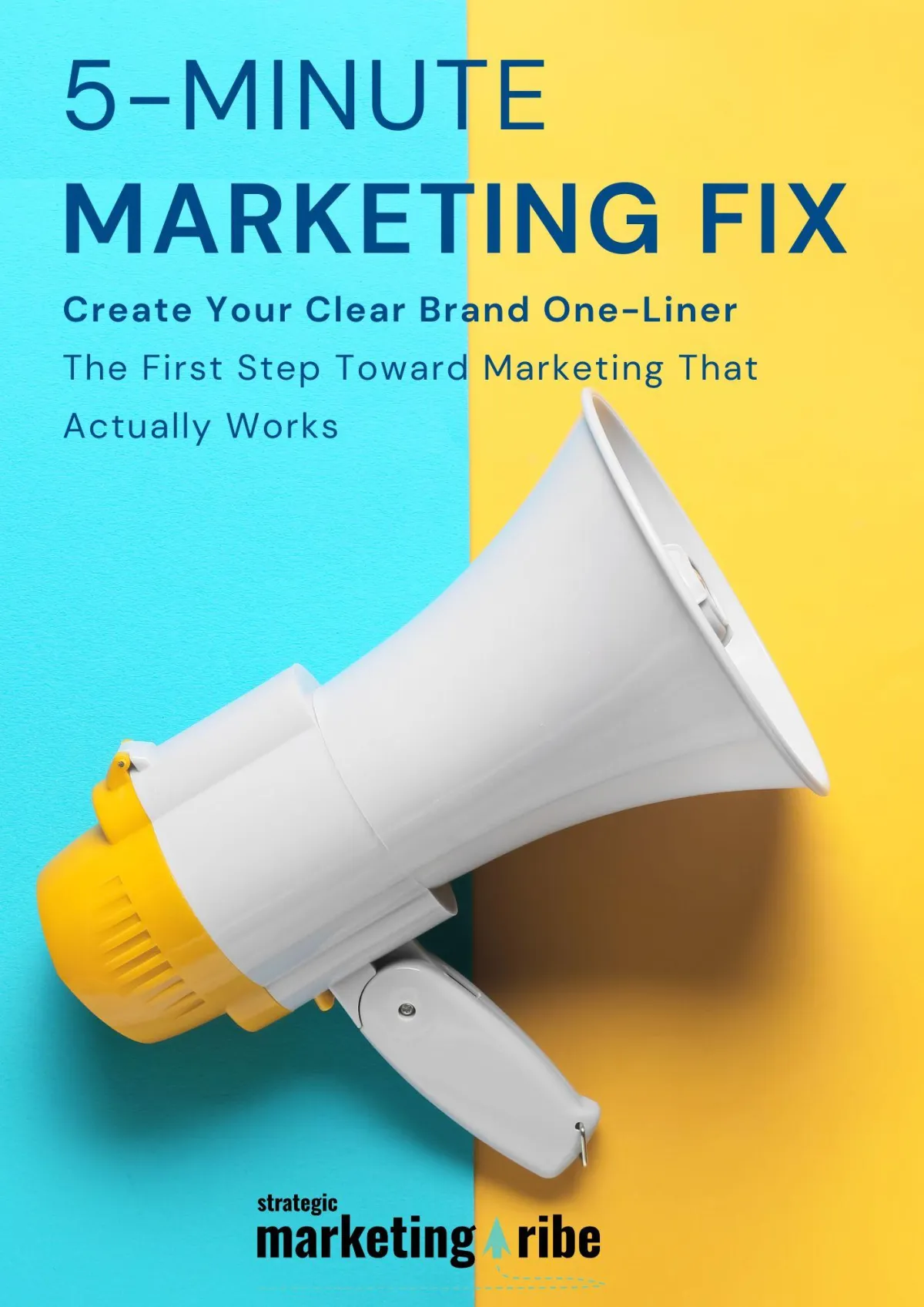
Created with clarity (and coffee)
